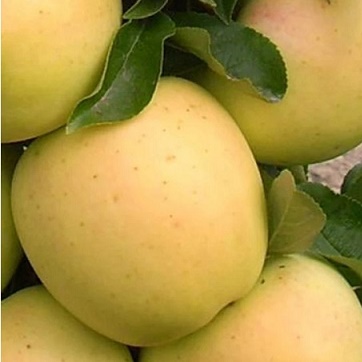Apple Columnar : URBAN BLUSHING DELIGHT® Semi-Dwarf (M106)
$55.95
Our columnar lineup gets a fresh infusion of talent with these exciting new European selections. Dr. Jaroslav Tupy of the Czech Republic has developed the Urban Apple® series–a number of scab and mildew resistant varieties ideally suited for the aspiring orchardist with very limited space.
This beauty is distinguished by an attractive crimson blush over a green background and delightful sweet flavour. Large crisp fruit will store up to four months. Blushing Delight® is precocious and productive. In Europe it is sold as 'Moonlight'.
NEEDS A POLLENIZER | ZONE 4 | HARVEST: MID SEPT.
Only logged in customers who have purchased this product may leave a review.
Growing Tips
Besides selecting the most disease resistant varieties, there are
a few simple things to do to have better apples.
- Fertilize under the outer edges of your trees. There are no feeder roots next to the trunk. A well fed tree stays healthier. (Adequate calcium in the soil also helps so that apples keep longer.)
- Pick up fallen fruit and compost, dispose of, or feed to livestock (where possible).
- Rake up leaves in the fall and compost them away from the orchard.
- Prune trees to encourage light and air to reach the inside of the tree.
- Provide bird nesting sites near your orchard. A variety of orchard companion type plants will attract native pollinator insects and also encourage birds to come and eat insect pests.





Reviews
There are no reviews yet.